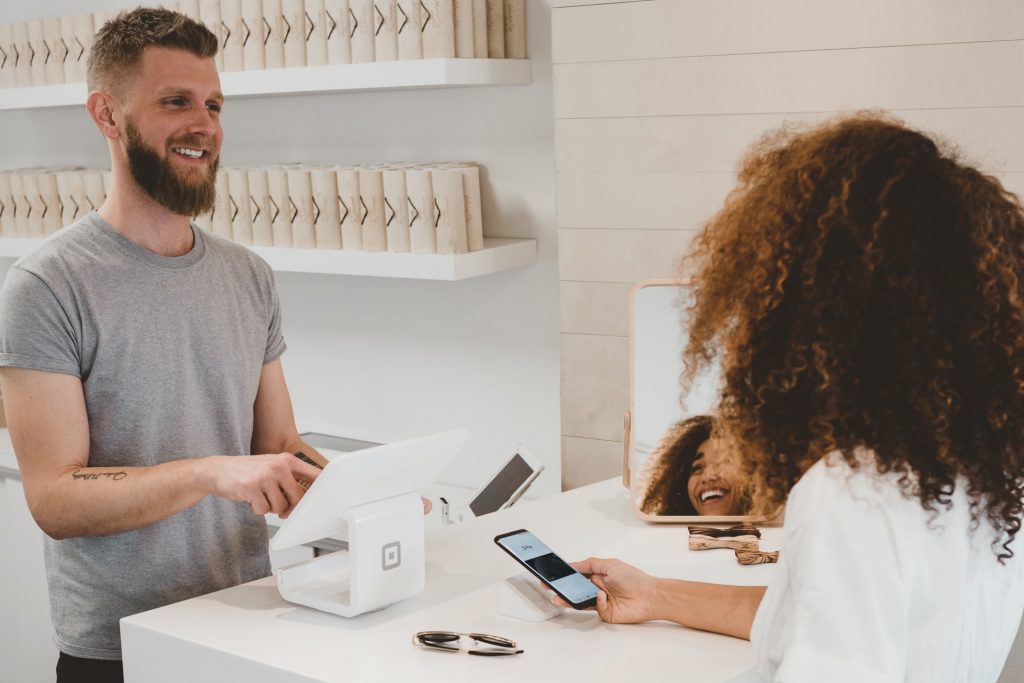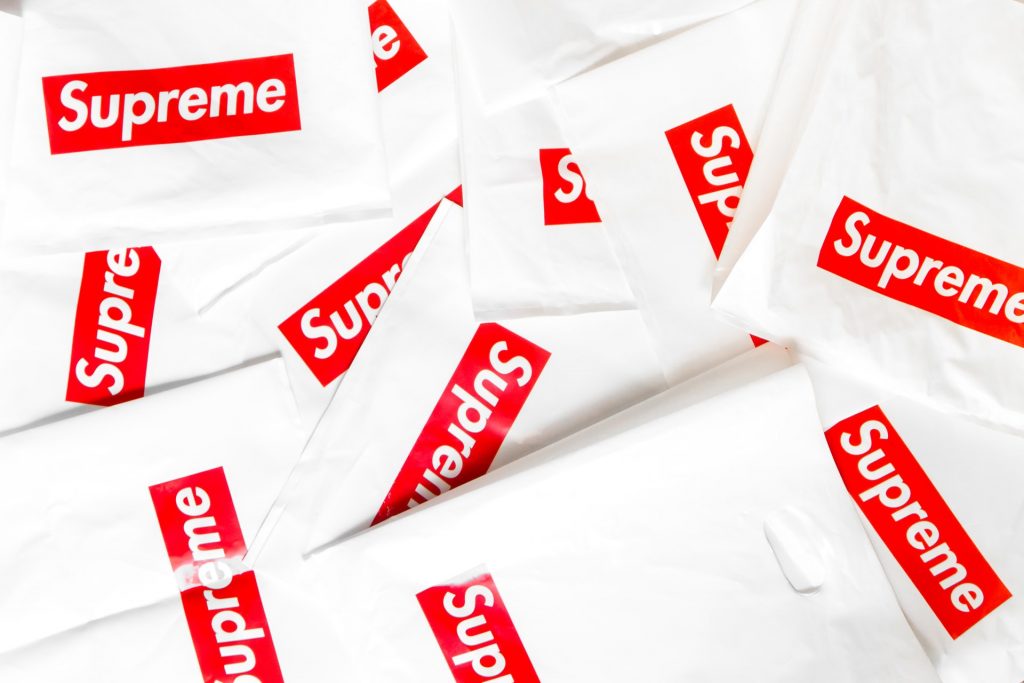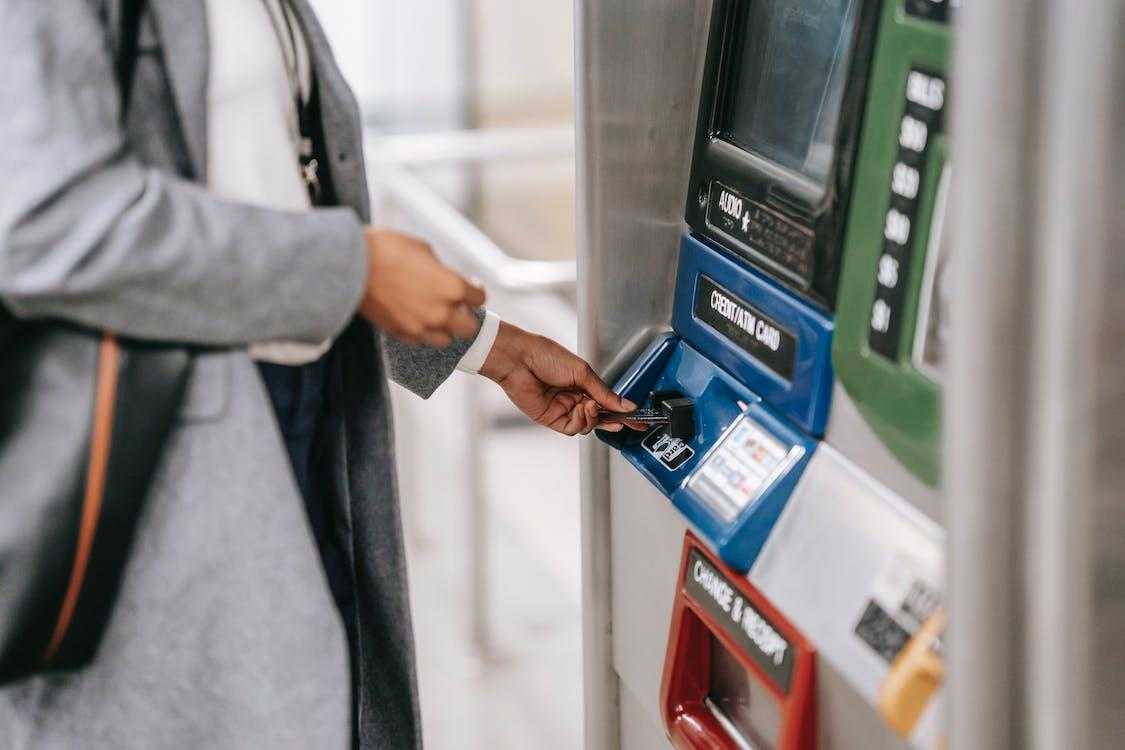53+ Customer Loyalty Statistics to Keep in Mind in 2024
 Fact-checked
Fact-checked
Last Updated: February 13, 2024
What’s the first word that comes to mind when you think of something disposable you’d use to wipe your face?
Is it a) tissue or b) kleenex?
If you’re reading this in North America, chances are it’s going to be the second one.
But did you know it’s actually a registered trademark?
That’s right. A brand name is used more often than the generic term. Brand loyalty on a subliminal level.
And this fun fact is only one of the most important customer loyalty statistics I’ve collected to bring you up to speed with the state of the field in 2019 and beyond.
But before digging deep into every interesting stat, let’s have a look at some important fascinating facts first.
Eye-Opening Customer Loyalty Statistics (Editor’s Choice):
- 65% of a company’s business comes from existing customers.
- 43% of people spend more money on brands they’re loyal to.
- A 5% increase in customer retention can lead to a 25% increase in profit or more according to statistics about customer loyalty.
- Highly-engaged customers buy 90% more often.
- 84% of US adults are loyal to specific retailers.
- Almost 90% of buyers are willing to pay more for improved customer experience.
- Recruiting new customers costs 5X more than retaining existing ones.
- Building a long-term business relationship with a new customer is 16X more costly than cultivating the loyalty of an existing customer.
Intrigued? I bet you are. And there’s plenty more where that came from.
Let’s dive right in.
What Are the Benefits of Customer Loyalty?
Which is better – keeping your existing customers or recruiting new ones?
Let’s see what the stats have to tell us.
1. 65% of a company’s business comes from existing customers.
(Source: Fundera)
- 80% of profits come from 20% of a company’s existing customers.
- Do loyal customers spend more? 43% of people do indeed.
- Recruiting new customers costs 5X more than retaining existing ones.
Attracting new customers is no easy task. It takes plenty of time and effort and a lot of money.
Which begs the obvious question:
“Why not prioritize your existing customer base instead?”
Actually, it makes perfect sense to do so.
And it’s not just about short-term profits.
2. Building a long-term business relationship with a new customer is 16X more costly than cultivating the loyalty of an existing customer.
(Source: Annex Cloud)
- There’s a 60%+ chance of selling to an existing customer.
- The chances of a first-time visitor to your eCommerce website buying something are less than 20%.
- A 5% increase in customer retention can lead to a 25% increase in profit or more.
Thanks to customer loyalty statistics for 2018, we already know how expensive and time-consuming it is to recruit new customers.
But the difficulties don’t end there:
Building a long-term relationship with them requires top dollar as well.
What’s more:
Statistics of customer loyalty tell us existing customers are far more likely to buy your product than first-time visitors. Existing customers are also likely to recommend your brand and customers are 4 times keener to buy something recommended by people they know. In conclusion, by increasing your customer retention, you can boost your profits significantly.
3. Highly-engaged customers buy 90% more often.
(Source: Vision Critical)
- They also pay 60% more per transaction.
- Engaged customers are 5X more likely to stick to the same brand in the future.
- A strong emotional connection is a stronger driver of loyalty than “ease” or “effectiveness”.
Connect with your customers on an emotional level, and they’ll repay you with unwavering loyalty.
Here’s the key takeaway:
Which brings us to the next question…
Good Customer Retention Percentage or How to Gain Customer Loyalty?
First of all, here’s a handy formula you can use to calculate your own customer retention rate courtesy of the guys at Hubspot:
Customer Retention Rate = ((# Customers at End of Period – # Customers Acquired During Period)) / # Customers at Start of Period)) X 100
4. According to customer loyalty statistics for 2017, the average customer retention rate in most industries was less than 20%.
(Source: Hubspot)
- Retention over 25% is considered above average in the media and finance industries.
- Retention over 35% is considered above average in the SaaS industry.
- Retention over 38% is considered above average in the ecommerce industry.
- Most apps and software have a 6-20% retention rate.
So, what is a good customer retention rate?
Unfortunately, there’s no simple answer.
What’s considered a good retention rate for a media company might be well below average for an online store. That’s why you should pay close attention to the latest trends and developments in your niche.
5. 57% of people would stop using a brand if their negative review is left unanswered.
(Source: Fundera)
- 68% of customers do so because they believe the company no longer cares about their business.
- 43% leave because they lose trust in the company.
- Brand loyalty statistics state 50% of customers stop using a brand straight away after a bad sales experience.
- 54% of consumers would drop retailers who don’t offer engaging content and/or relevant coupons.
- Businesses lose $1.6 trillion every year when customers leave them.
There are plenty of factors that can lead to a low customer retention rate.
It should come as no surprise that the most important ones have to do with engagement.
Consumer reports on customer service are clear:
If you don’t give a hoot about your customers, don’t address their legitimate criticism, and don’t offer them any incentives, it will probably affect your reputation. In case you weren’t aware, 86% of people don’t mind paying more if it’s to a reputable company. And there goes your profit.
After all:
It’s not like yours is the only small business selling printed T-shirts and tote bags – and small businesses fail at an alarming rate.
And now that we know why customers leave, let’s check out what keeps them coming back for more.
Here’s what the latest consumer loyalty statistics have to say:
6. Price and value are the top reason to stay loyal to a brand for 92% of customers.
(Source: Business Wire)
- Product and quality are the second most important reason, with 79%.
- 77% of consumers will stick with a brand that resends lost or damaged items with fast shipping.
- With 71%, variety and selection are the third most important reason.
- 62% of consumers are willing to spend more if their shopping experience is customized to their interests.
If you’d like to bump up your customer retention rate (and, let’s face it, what business owner doesn’t), you should start by offering a quality product at a competitive price.
Next, you should widen your product range.
Finally, as customer loyalty statistics for 2019 make clear, you need to make sure each and every one of your customers gets a shopping experience perfectly suited to his or her unique needs.
As spy extraordinaire Harry Hart put it in the movie Kingsman: The Secret Service:
“Now the first thing every gentleman needs is a good suit. By which I mean, a bespoke suit.”
Can’t argue with that.
And here are some strategies to boost your customer retention:
7. Customer loyalty statistics suggest you should segment your customer base by personas.
(Source: Hubspot)
- Highlight case studies during the sales process.
- Create a roadmap for your future relationship with your customers.
- Ask for customer feedback and act on it.
- Keep a record of communication to address past and/or recurring issues.
Loyal customers will appreciate your respect for their opinions and your efforts to act on their feedback, as the latest statistics on customer loyalty programs highlight. What’s more, 90% percent of people decide on buying a product based on online reviews.
Take extra care not to creep out your customers! According to a 2016 report, this happens most often when companies misuse personal data, fail to delete data upon request or use invasive marketing tactics.
8. 74% of millennials would consider switching to a different retailer in case of poor customer service.
(Source: Business Wire)
- 86% of GenXers would leave if customer service is poor.
- 85% of Baby Boomers would do so.
- Almost 90% of buyers are willing to pay more for an improved customer experience.
- 58% of millennials would stick to the same brand no matter what.
- 80% of millennials buy exclusive store-branded products because they get good value for money.
Brand loyalty statistics for 2018 suggest negative sales experience affects millennials far less than it does older generations. CLICK TO TWEET
While poor customer service remains a big turn-off across the board, over half of millennials are willing to stick with the brands they’re loyal to through thick and thin.
And that’s great news for startup owners, in particular, as they face an uphill struggle to stay in business.
Customer Loyalty Program Statistics
9. 73% of buyers think loyalty programs should be a way for brands to show loyalty to customers.
(Source: Kitewheel)
- Members of loyalty programs generate between 12 and 18% more revenue than non-members.
- There are 3.8 billion loyalty program memberships in the US.
- 56% of consumers improve their opinion of a brand that offers personalized rewards.
- Mobile apps for tracking and redeeming rewards are the preferred method for 52% of loyalty program members.
“The things we do for frequent-flyer mileage,” as James Bond sarcastically noted in Goldeneye. On that particular occasion, he had to catapult out of a stationary helicopter seconds before it got demolished by Stinger missiles.
Sound familiar?
The thing is:
Glib remark or not, we all cling on to loyalty schemes in the face of adversity. And we’re willing to book that slightly more expensive flight from New York to Warsaw as long as it’s going to earn us a few extra miles on our Star Alliance membership card.
Even if there’s a five-hour layover in Tangier.
Ouch.
10. Are you a member of any company’s loyalty program? Here are some loyalty program stats you should know.
- Over 90% of companies have some kind of loyalty program.
- 52% of US consumers join the loyalty program of a brand they frequently buy products from.
- The average US consumer participates in 14.8 loyalty programs but is active in 6.7 of them.
- 18% of consumers were active in every loyalty program they entered.
- 65% of US consumers participated actively in less than half of the loyalty programs they entered.
- 49% of consumers in the US engaged with up to three loyalty programs.
(Source: Forbes)
Seeing these statistics, we can say that a lot of people take part in the loyalty programs of the companies they purchase from. Through membership management software loyal customers get points and rewards which makes them happy and more likely to buy something again from their favorite brands.
Next, come customer retention statistics, so let’s see what customers have reported in multiple surveys.
- A 5% boost in customer retention results in a 25% increase in profit.
- Loyal customers spend 33% more money per order in comparison to new customers.
- 43% of US consumers spend more money on products from businesses in which they have a loyalty card.
- 93% of consumers will buy again if the brand has excellent customer support.
(Source: MyCustomer)
From the statistics above, we can see that people who engage in loyalty programs spend more on products than people who aren’t in any program. Reasons behind this behavior vary, for example, some loyal customers are happy when they receive rewards. Also, a big percentage of loyal customers (95%) stay dedicated to a brand because of its good customer support.
The following statistics will tell us what is cheaper, customer acquisition, or customer retention.
- Customer acquisition costs 7%-13% more than customer retention.
- Companies in the eCommerce category reported that retention is five times less pricey than acquisition.
(Source: FreshWorks)
The statistics related to customer acquisition can vary for different industries. There are many case studies and statistics on the topic of customer retention and acquisition so it’s hard to say with certainty. Retention is cheaper than acquisition – after all, you need a good lead generation company or press release distribution services for the latter.
11. According to Starbucks customer loyalty statistics, the coffee company’s membership program grew more than 25% between 2017 and 2019.
(Source: Zinrelo)
- In the second quarter of 2020, Starbucks saw a 15% increase in active loyal members.
(Source: Fool) - According to Apple customer loyalty statistics, the brand had a 91% loyalty score in 2017.
- Amazon customer loyalty statistics state 95% of Amazon Prime members would “definitely” or “probably” renew their membership.
- 85% of Prime buyers visit Amazon at least once a week.
- According to customer loyalty statistics for the UK, 36% of Brits use customer loyalty programs multiple times a month.
Big brands like Amazon, Apple, and Starbucks offer some pretty lucrative loyalty schemes – and customers on both sides of the pond are getting hooked!
What’s more:
Small businesses are increasingly getting in on the action in order to improve customer retention by rewarding loyal customers.
Which brings us to the $64,000 question:
Why Are Consumers Loyal to Brands?
Indeed they are – to a surprising extent. Let’s look at the latest brand loyalty statistics in 2020.
12. As of May 2020, 35% of US consumers are likely to try new brands of healthy foods vs. 29% of them opting for a new snack.
(Source: Statista)
How willing are US smartphone users to change the brand in 2020? Well, not many. Merely 11% are “very likely” to do so.
13. 84% of US adults are loyal to specific retailers.
(Source: Fundera)
- In addition, 82% of Americans are loyal to product-brands.
- 37% of US customers become loyal to a company after five purchases or more.
- 60% of loyal customers will purchase more frequently from their preferred companies.
- People will pay a price premium of more than 13% for luxury services if they have a great customer experience.
These customer loyalty stats unequivocally show customers aren’t as fickle as many would have you believe.
But let’s see
What Has Changed During COVID-19 Pandemic?
Many things have changed due to the COVID-19 pandemic, and customer loyalty is one of them. People have switched to working remotely and with that, they started purchasing products from the comfort of their homes.
So, let us show you some facts about customer loyalty that have changed throughout 2020.
14. Per Ketchum’s report from July, 45% of consumers in the United States have changed their preferences during the pandemic.
15. According to the McKinsey report from August, 75% of US consumers have changed their shopping habits. The reasons cited were availability, price, and convenience.
(Source: Fortune)
Having in mind the rise from 45% to 75% in only a month, shopping habits have definitely changed significantly in 2020.
And how many people plan to stick to their new preferences?
- According to a study conducted by the communication firm Ketchum, 62% of people in the US who changed their brand preference will make that choice permanent even after the COVID-19 pandemic ends.
(Source: Fortune)
Now, take a look at some Apple brand loyalty statistics.
15. In 2020, Apple’s brand value had increased to $352 billion from $309.5 billion in 2019.
(Source: Statista)
- The American Customer Satisfaction Index published a survey where Apple was ranked the highest in regard to customer satisfaction, with an 82 out of 100 quality score.
- Around 40% of Apple customers reported that their brand loyalty increased during the pandemic.
- 55% of Apple users said they used Apple devices more during the COVID-19 pandemic.
(Source: Fool)
Emotional connection and customer satisfaction are some of the reasons why people are sticking with Apple. And, having in mind the statistics above, it’s no wonder that this company’s value increased in 2020 and that it holds second place, after Amazon.
Bottom line:
Nurture your existing customer base, and you’ll reap the benefits. CLICK TO TWEET
Conclusion
Now that we’ve studied carefully the latest customer loyalty statistics, we can safely conclude two things:
First, customers expect a diverse range of high-quality products. Yes, content is king – in more ways than one.
Second, customized offers and exemplary customer service are absolutely crucial. And you have only one chance to get it right. One strike and you’re out.
However:
As long as you meet your customers’ (admittedly high) expectations, your venture will live long and prosper.
Cheers to that!
Now get a kleenex and wipe those tears of joy.
3 Comments
Leave a Reply
You must be logged in to post a comment.






![How to Cancel YouTube TV? [Step-By-Step Guide]](https://review42.com/wp-content/uploads/2022/09/How-to-cancel-youtube-tv.png)
![Forex Trading Taxes [Comprehensive 2024 Guide]](https://review42.com/wp-content/uploads/2022/09/Forex-trading-taxes.png)
![Swing Trading vs Day Trading [Differences, Pros & Cons]](https://review42.com/wp-content/uploads/2022/09/Swing-trading-vs-day-trading.png)

![How to Watch TV Without Internet? [2024’s Guide]](https://review42.com/wp-content/uploads/2022/09/How-to-watch-TV-without-internet.png)


SEO Links
April 18, 2021 at 3:25 am
Interesting point of view. Im curious to think what type of impact this would have globally? Sometimes people get a little upset with global expansion. I will be back soon and follow up with a response.
Popular Link
April 19, 2021 at 3:33 am
Nice to be going to your blog again, it continues to be months for me. Properly this write-up that ive been waited for so lengthy. I require this article to total my assignment inside the university, and it has exact same topic together with your article. Thanks, terrific share.
Wonda Dashne
July 27, 2021 at 1:40 am
Great, this is a very valuable opinion